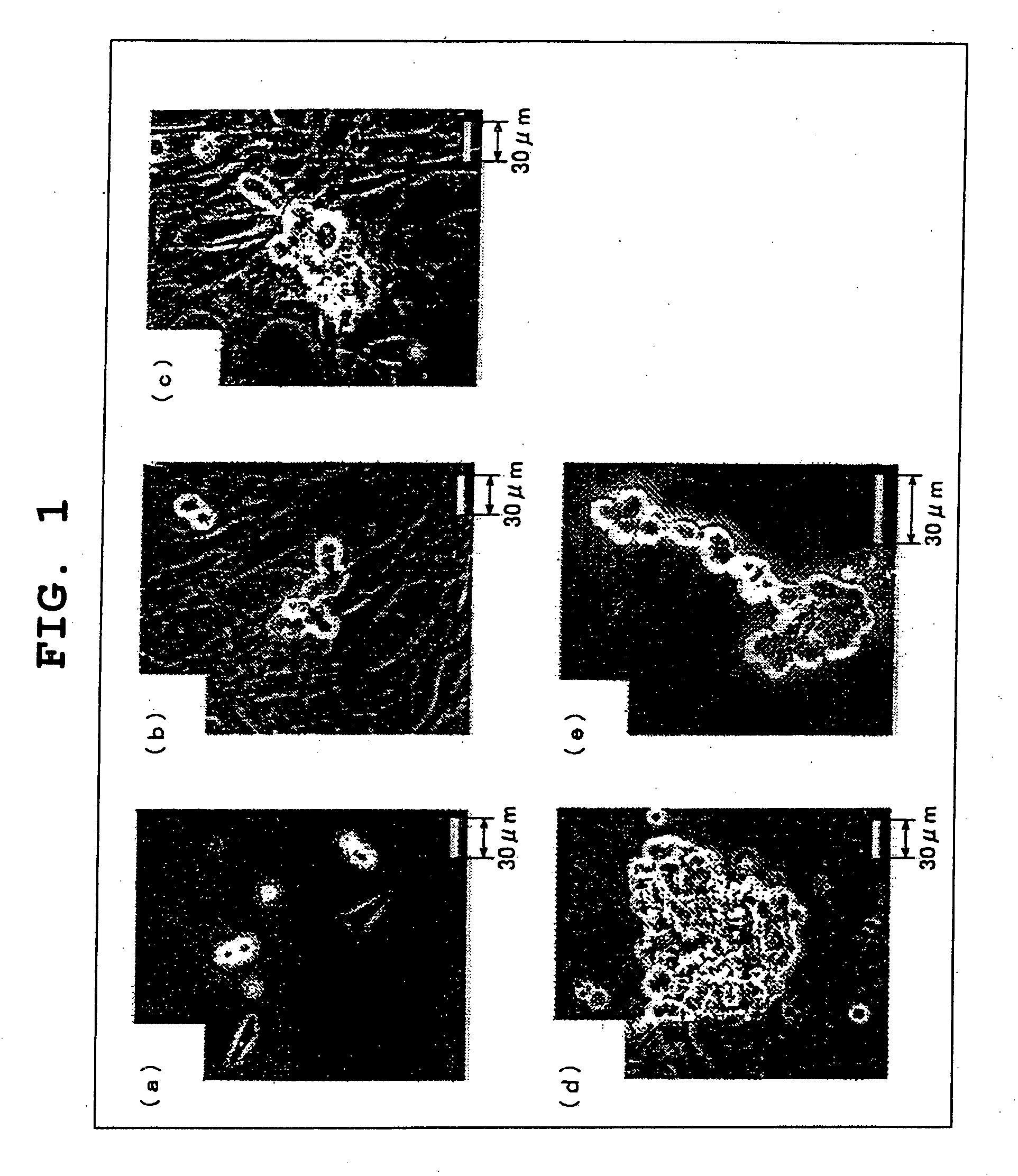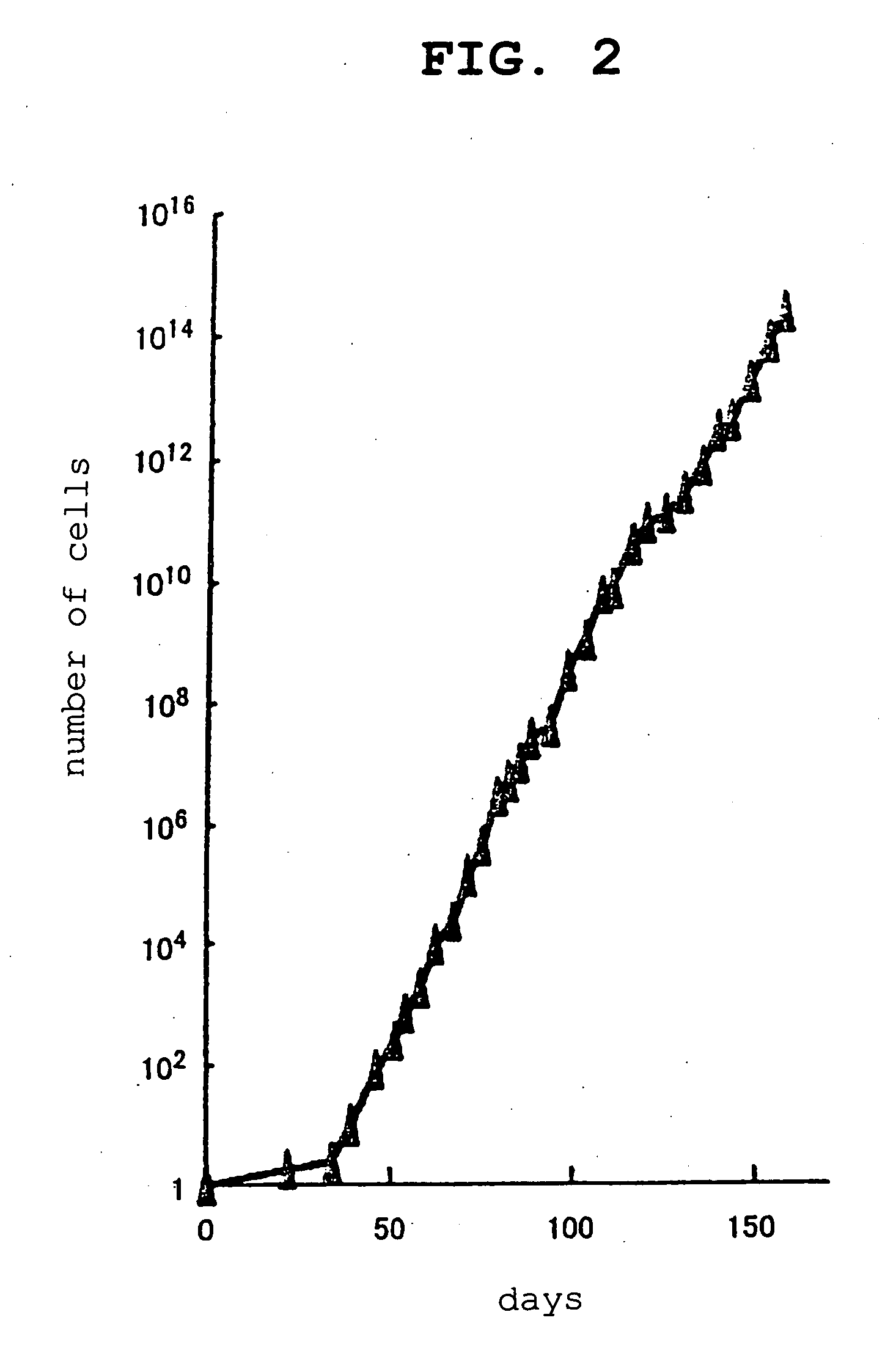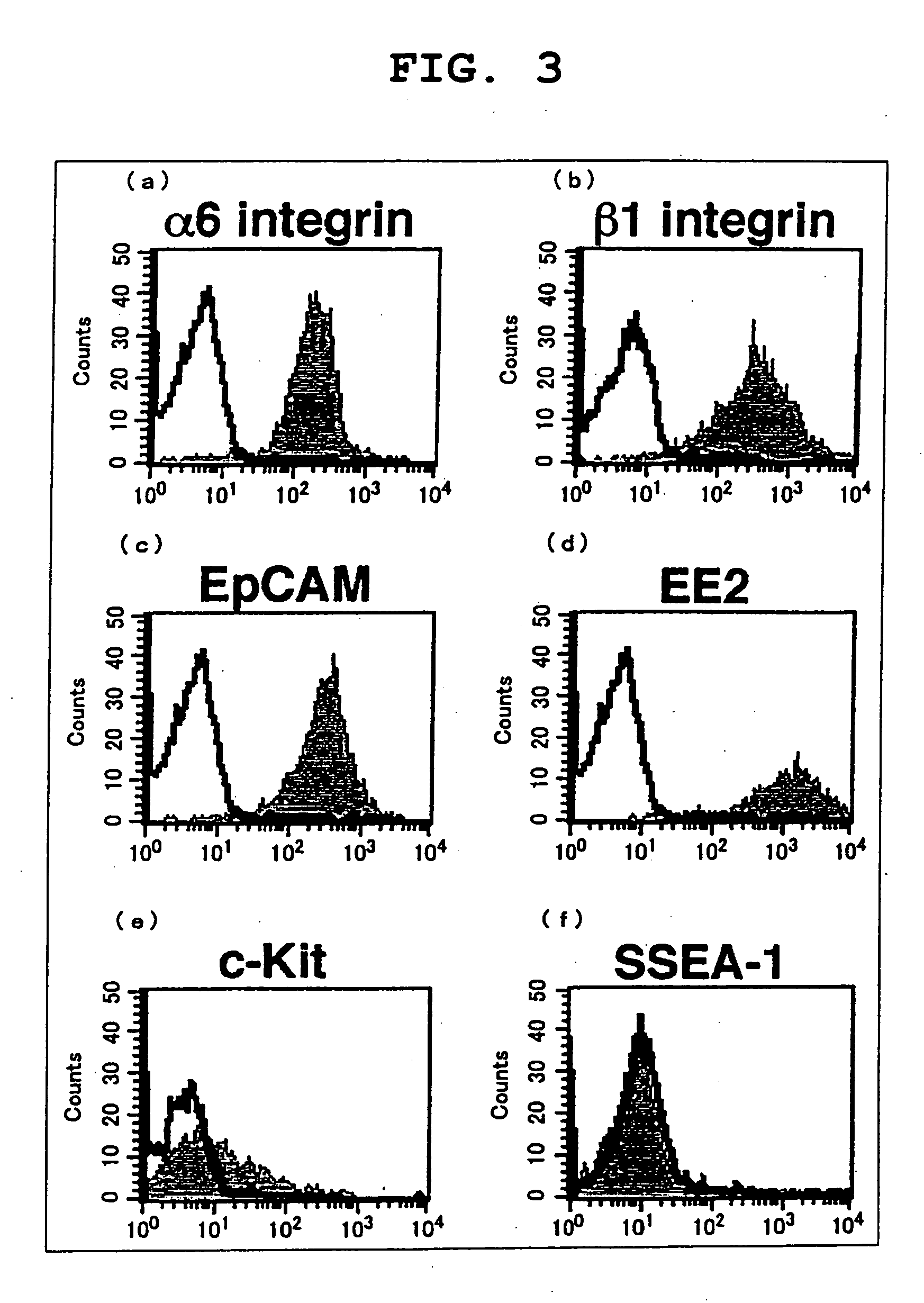Method of growing sperm stem cells in vitro, sperm stem cells grown by the method, and medium additive kit to be used in growing sperm stem cells in vitro
a technology of sperm stem cells and stem cells, which is applied in the field of growing spermatogonial stem cells in mammals, can solve the problems of low efficiency, no es cells capable of producing germ cells, and report of knockout, and achieve the effect of effectively using spermatogonial stem cells
- Summary
- Abstract
- Description
- Claims
- Application Information
AI Technical Summary
Benefits of technology
Problems solved by technology
Method used
Image
Examples
example 1
[1] Experimental Methods and Materials
(1) Animals Used in the Experiment
[0096] First, the animals used in this experiment are described.
[0097] Testis cells were collected by two-step enzymatic digestion from a newborn transgenic mouse line C57BL6 / Tg14 (act-EGFP-OsbY01) that was bred into DBA / 2 mouse strain (provided by Dr. Okada, Osaka University), and used for culture (reference 1, Okabe M et. al., ‘Green mice’ as a source of ubiquitous green cells, FEBS Lett, vol. 407, pp. 313-319, 1997). The spermatogonia and spermatocytes of these mice express the EGFP gene, the level of expression decreases gradually after meiosis. Therefore, donor cells can be readily identified following transplantation.
[0098] Cultured cells were transplanted into BALB / c nude mouse or W pups mouse (5-10 days old, Japan SLC). To avoid endogenous spermatogenesis, nude mice were treated with busulfan (44 mg / kg) at 6 wk of age and were subsequently injected with corresponding bone marrow cells to reduce mor...
example 2
[1] Experimental Methods and Materials
(1) Animals Used in the Experiment
[0127] First, the animals used in this experiment are described.
[0128] Testis cells were collected from a neonatal pup of DBA / 2 mouse by two-step enzymatic digestion in the same manner as Example 1, and were used for cultivation.
[0129] W mice (5 to 10 days old) were used as recipients. Female wild C57BL / 6 mice were used for mating with the recipients.
[0130] The DBA / 2, W mice, and C57BL / 6 mice were purchased from Japan SLC (Hamamatsu, Japan).
(2) Culture Conditions
[0131] Cultured cells (spermatogonial stem cells) were established under the same conditions as Example 1 using isolated testis cells.
[0132] The plasmid vector based on the pCXN harboring the neomycin resistance gene and the EGFP structural gene functionally linked to CAG promoter (pCAG-EGFP) was used for gene introduction. For lipofection, spermatogonial stem cells were transfected with Fugene6 transfection reagent (Roche) according to the ma...
example 3
[0140] [1] Experimental Methods and Materials
[0141] GS cells (cultured cells) established in the same manner as Example 1 were further cultured using a culture medium containing recombinant human neurturin (manufactured by Wako Pure Chemical Industries), in place of recombinant rat GDNF, at a concentration of 30 ng / mL, to examine whether the growth and colonization of the GS cells would be maintained. Four days after the medium was exchanged with the neurturin-containing medium, the formed colonies were morphologically observed using a phase contrast microscope, and the number of cultured cells was counted.
[2] Results
[0142] Even when the established GS cells were cultured using the medium containing neurturin, in place of GDNF, growth of GS cells was confirmed and colonization was observed as with the use of the GDNF-containing medium (FIG. 7a). On the other hand, even when GS cells were cultured in a GDNF-free neurturin-free medium for control, almost no colonization was observ...
PUM
| Property | Measurement | Unit |
|---|---|---|
| Time | aaaaa | aaaaa |
| Concentration | aaaaa | aaaaa |
| Dimensionless property | aaaaa | aaaaa |
Abstract
Description
Claims
Application Information
 Login to View More
Login to View More - R&D
- Intellectual Property
- Life Sciences
- Materials
- Tech Scout
- Unparalleled Data Quality
- Higher Quality Content
- 60% Fewer Hallucinations
Browse by: Latest US Patents, China's latest patents, Technical Efficacy Thesaurus, Application Domain, Technology Topic, Popular Technical Reports.
© 2025 PatSnap. All rights reserved.Legal|Privacy policy|Modern Slavery Act Transparency Statement|Sitemap|About US| Contact US: help@patsnap.com



